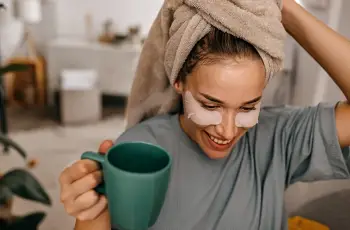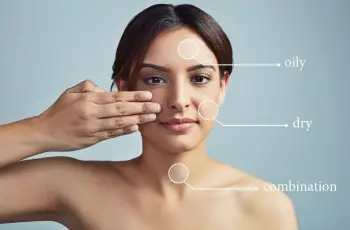
Do I Have Fine Lines or Actual Wrinkles? Dermatologists Explain the Difference
If you’ve noticed lines appearing on your face, you might wonder: Are these just fine lines or actual wrinkles? The truth is, both are signs of aging, but they’re not quite the same.
Understanding the difference can help you choose the right treatments and prevention methods.
Fine lines are the early, shallow creases on the skin’s surface, often caused by facial movements or environmental factors like sun exposure.
Wrinkles are deeper, more pronounced folds resulting from collagen loss and prolonged skin damage. Both develop gradually but require different approaches to care.
To shed light on this topic, we consulted three board-certified dermatologists: Dr. Tess Mauricio, Dr. Marisa Garshick, and Dr. Blair Murphy-Rose.
They explain what causes fine lines and wrinkles, how to tell them apart, and what you can do to keep your skin youthful.
Fine Lines vs. Wrinkles: Understanding the Difference
Fine lines are the first visible signs of skin aging. Dr. Mauricio says, “Fine lines are shallow and faint, usually created by repeated facial expressions or caused by sun damage and dehydration.” These lines often show up around the eyes, forehead, and mouth.
Wrinkles are deeper and more noticeable. They form as collagen and elastin, the proteins that keep skin firm and elastic, start to break down.
Muscle movement over many years also deepens these lines, making wrinkles more prominent.
Think of fine lines as the early “warning signs” of skin aging, while wrinkles are the more established, permanent creases.
What Causes Fine Lines and Wrinkles?
Various factors influence the appearance of lines on your face. Some are natural, while others are preventable with lifestyle changes.
1. Repeated Facial Expressions
Our faces move a lot throughout the day. Smiling, frowning, squinting—these expressions use muscles beneath the skin. Over time, these movements cause creases to form on the surface.
Dr. Garshick likens this to folding a piece of paper repeatedly. Eventually, the paper creases and weakens.
The same happens with your skin, especially in areas around the eyes and mouth where expressions are frequent.
2. Sun Exposure
Sun damage is one of the most common causes of premature aging. UV rays penetrate the skin and damage DNA, leading to the breakdown of collagen and elastin fibers.
All three dermatologists emphasize that UV exposure increases free radical production. These unstable molecules attack skin cells, accelerating aging and making fine lines and wrinkles more visible.
Daily sun protection is essential to prevent this damage and maintain youthful skin.
3. Dehydration
Dehydrated skin looks dull and can make fine lines more obvious. Dr. Murphy-Rose says, “Lack of moisture means skin cells shrink, reducing their plumping effect.”
When your skin lacks hydration, it loses elasticity, and the surface becomes rougher, allowing lines to stand out.
Proper hydration—both topical and internal—is vital to keeping skin smooth and supple.
4. Poor Sleep
Sleep is your body’s natural time for repair, including the skin. Without enough restful sleep, your skin does not get adequate time to regenerate.
Dr. Garshick explains that poor sleep slows down skin restoration. This makes fine lines and wrinkles more apparent and contributes to a tired, aged appearance.
Aim for 7-9 hours of quality sleep each night to help your skin recover and stay healthy.
5. Poor Nutrition
Your skin needs the right nutrients to stay strong and elastic. Proteins, fats, vitamins, and minerals all contribute to collagen and elastin production.
Dr. Murphy-Rose points out that poor diet results in weaker collagen, which causes fine lines and wrinkles to form faster. Antioxidants from fruits and vegetables combat free radicals and support skin health.
Eating balanced meals and drinking plenty of water promotes a youthful glow.
6. Smoking
Smoking harms your skin in multiple ways. It increases oxidative stress, damages DNA, and reduces collagen production.
Dr. Garshick notes that smokers often develop “smoker’s lines”—vertical wrinkles around the mouth caused by repetitive puckering to inhale smoke.
Quitting smoking can help slow skin aging and reduce fine lines and wrinkles.
How to Prevent Fine Lines and Wrinkles
While aging is natural, many lifestyle choices and skincare habits can delay or minimize signs of aging.
1. Daily Sun Protection
Using sunscreen daily is the best way to protect your skin from UV damage.
Dr. Mauricio recommends broad-spectrum physical sunscreens like AlumierMD Sheer Hydration SPF 40, which blocks UVA and UVB rays while moisturizing the skin.
Reapply sunscreen every two hours, especially if you’re outdoors, to maintain effective protection.
2. Stay Hydrated
Drink plenty of water and use moisturizers that contain humectants such as hyaluronic acid and glycerin. These ingredients draw moisture into the skin, keeping it plump and reducing the appearance of fine lines.
Dr. Garshick stresses hydration as a foundational step for healthy skin.
3. Maintain a Healthy Diet
Eat a diet rich in antioxidants, vitamins A, C, and E, healthy fats, and protein. These nutrients support collagen production and skin repair.
Limit sugar and processed foods, which can accelerate collagen breakdown and inflammation.
4. Prioritize Quality Sleep
Good sleep allows your skin to repair and regenerate. Develop a consistent sleep schedule, reduce screen time before bed, and create a restful environment.
Your skin will thank you with improved tone and fewer visible lines.
5. Avoid Smoking and Excess Alcohol
Both smoking and excessive alcohol consumption damage collagen and cause dehydration. Quitting smoking and moderating alcohol intake supports skin elasticity and overall health.
Skincare Ingredients to Fight Fine Lines and Wrinkles
Certain skincare ingredients are proven to help reduce and prevent fine lines by boosting collagen or protecting the skin from damage.
Retinoids
Retinoids, derived from vitamin A, are among the most effective anti-aging ingredients. They speed up skin cell turnover and stimulate collagen production.
Dr. Murphy-Rose explains that retinoids not only prevent but also reduce the appearance of fine lines and wrinkles. Start slowly, as they can cause irritation initially.
Antioxidants
Topical antioxidants neutralize free radicals, protecting skin cells from damage. Vitamin C, coenzyme Q10, green tea extract, and vitamin E are common antioxidants used in skincare.
Dr. Murphy-Rose stresses that antioxidants are essential for maintaining collagen and youthful skin.
Peptides
Peptides are small chains of amino acids that signal skin to produce more collagen and elastin.
Dr. Garshick mentions products with peptides, like RescueMD DNA Repair Complex, which can soften wrinkles and improve skin texture.
Professional Treatments for Fine Lines and Wrinkles
For those wanting faster or more dramatic results, in-office treatments can stimulate collagen and improve skin texture.
Ultrasound Therapy
Sofwave uses ultrasound to heat tissue below the skin’s surface, boosting collagen production with no downtime. Dr. Murphy-Rose recommends it for preventing and treating fine lines.
Laser Resurfacing
CO2 laser treatments resurface the skin and remodel collagen but require downtime for healing.
Non-ablative fractional lasers like Fraxel Dual offer less downtime while improving skin tone and texture.
Microneedling and Radiofrequency
Microneedling creates micro-injuries that stimulate collagen. Radiofrequency enhances this by heating deeper skin layers.
Morpheus8, a device combining microneedling and radiofrequency, is effective for wrinkle reduction, as Dr. Garshick notes.
At-Home Devices
Red light therapy wands and LED masks boost collagen gently and can improve fine lines over time. Dr. Garshick recommends devices like Solawave Radiant Renewal or CurrentBody Skin LED Mask.
Lifestyle Tips to Support Youthful Skin
Manage stress through meditation or exercise, as stress hormones can accelerate skin aging.
Avoid excessive facial movements when possible, like squinting or furrowing brows.
Cleanse your skin gently to maintain its natural barrier.
Incorporate antioxidants in your diet and skincare.
Use eye creams with caffeine or peptides to reduce fine lines around eyes.
When to See a Dermatologist
If fine lines or wrinkles bother you or seem to worsen rapidly, consult a board-certified dermatologist.
They can tailor treatments, recommend products, and offer medical procedures suited to your skin type and concerns.
Summary
Fine lines and wrinkles are part of the natural aging process but are influenced by lifestyle, environment, and genetics. Fine lines are shallow, early signs, while wrinkles are deeper, more permanent creases.
Prevention through sun protection, hydration, good nutrition, and healthy habits is key. Using effective skincare ingredients like retinoids, antioxidants, and peptides helps keep skin youthful.
Professional treatments can provide additional support by stimulating collagen and improving skin texture.
By understanding and caring for your skin wisely, you can age gracefully and maintain a radiant, healthy complexion for years to come.


